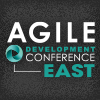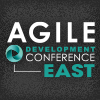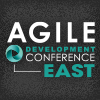 |
Disciplined Agile Delivery in IT: A Full Lifecycle Approach
Slideshow
The good news: Agile methods deliver superior results compared to traditional approaches. The bad news: For IT projects, mainstream agile methods-Scrum, Extreme Programming (XP), and Agile Modeling (AM)- provide only part of the overall solution. Agile IT projects require some time and effort for upfront planning at the start and activities for sophisticated deployment scenarios at the end. Additionally, most agile projects in large IT organizations cannot escape compliance with governance standards. Mark Lines describes and explores the realities of agile development in enterprise IT environments. Discover how IBM’s freely available Disciplined Agile Delivery (DAD) process framework combines common practices and strategies from mainstream agile methods to address the full delivery lifecycle-from project initiation to solution release into production.
|
Mark Lines, UPMentors
|
 |
Test Automation on Large Agile Projects: It's Not a Cakewalk Automating regression testing on large-scale agile projects with multiple independent Scrum teams is not a cake walk. Because there is no single "test team" that performs all the testing-each Scrum team develops and runs independent tests, gaps arise as different automation implementations spring up. One team adds a new function which breaks automated tests, setting back the progress of other teams. Scott Schnier reviews one organization's journey developing a "test community of practice" to coordinate test development and maintenance across Scrum teams. Scott shares the lessons they learned, particularly selecting tools compatible with other developer and tester needs. Learn how Scott extended the JUnit framework to support automated functional testing and how his teams keep the standard that a user story is not really done until all its tests are "green" in the continuous integration, regression test pipeline.
|
Scott Schnier, Agilex Technologies
|
 |
Better Software Conference East 2012: Lean Development Practices for Enterprise Agile
Slideshow
Enterprise agile initiatives require strategic, portfolio, product, and team perspectives at all levels. Alan Shalloway has found that lean software development principles help integrate all of these perspectives into a cohesive, actionable whole. With a combination of lean science, lean management, lean team, and lean learning methods, Alan shows how your organization can prepare for enterprise agility. Lean science focuses on the “laws” present in all software development projects. Lean management empowers executives to contribute to the context within which teams can flourish. Lean team methods are actualized in Kanban approaches. Lean learning empowers everyone in the organization to improve his skills and practices.
|
Alan Shalloway, Net Objectives
|
 |
IT Governance and Compliance in an Agile World
Slideshow
Establishing IT governance and compliance practices is essential for organizations that have regulatory or audit requirements. The good news is that you can be agile and still comply with Sarbanes-Oxley, CFR 21, HIPAA, and other regulatory imperatives. Done well, IT controls actually help you improve both productivity and quality. Bob Aiello describes how to implement IT controls in frameworks such as ISACA Cobit and ITIL v3 that many regulatory frameworks require-while maintaining agile practices. Bob's guidance includes specific examples of establishing IT controls: separation of duties, work-item to change-set traceability, physical and functional configuration audits, and more. Bob explains how these practices help government, defense, and corporations scale agile practices where audit and regulatory compliance is a must.
|
Bob Aiello, CM Best Practices Consulting
|
|
|
Massive Continuous Integration and Light-speed Iterations
Slideshow
Continuous integration (CI) has become a buzzword, with most engineering organizations claiming they've adopted the practice. However, the sad truth is that unreliable tests, long feedback loops, and poor configuration management block their efforts and minimize CI's potential benefits. Jesse Dowdle shares how AtTask radically redesigned its engineering pipeline and, through massive CI scaling, drove three days of testing to just minutes. Learn the pros and cons of different CI systems and how to integrate them with the cloud. Watch a live demo of AtTask's internal test and CI systems, which they’ve designed to make "Every commit a potential release candidate"-meaning that every commit is an iteration. Arm yourself with the talking points to sell massive CI to executives.
|
Jesse Dowdle, AtTask, Inc.
|
|
|
Adaptive Leadership: Accelerating Enterprise Agility
Slideshow
Agile practices have proven to help software teams develop better software products while shortening delivery cycles to weeks and even days. To respond to the new challenges of cloud computing, mobility, big data, social media, and more, organizations need to extend these agile practices and principles beyond software engineering departments and into the broader organization. Adaptive leadership principles offer managers and development professionals the tools they need to accelerate the move toward agility throughout IT and the enterprise. Jim Highsmith presents the three dimensions of adaptive leadership and offers an integrated approach for helping you spread agile practices across your wider organization. Jim introduces the “riding paradox” and explores the elements of an exploring, engaging, and adaptive leadership style.
|
Jim Highsmith, ThoughtWorks, Inc.
|
|
|
Agile Architecture Practices for Large Scale Agile Development Although “agile architecture” may sound like an oxymoron to you, the reality is that a simple, elegant architecture is a key enabler of any successful system, particularly large scale ones. Scott Ambler describes agile architecture practices-at both the project and enterprise level-that form a middle ground between the extremes of big architecture up-front and outright hacking. Scott discusses agile modeling practices-initial architecture envisioning, proving an architecture with working code, and just-in-time model storming-that enable agile teams to benefit from architectural modeling without suffering the drawbacks of detailed design documentation. Beyond architecture, Scott introduces agile design techniques-continuous integration (CI), test-driven development (TDD), and refactoring-that build on and provide feedback to an emergent architecture.
|
Theresa Quatrani, IBM Rational
|
|
|
Performance Testing Throughout the Life Cycle Even though it is easy to say that you should continuously test your application for performance during development, how do you really do it? What are the processes for testing performance early and often? What kinds of problems will you find at the different stages? Chris Patterson shares the tools and techniques he recently used during the development of a highly concurrent and highly scalable server that is shipping soon. Chris explores how developers and testers used common tools and frameworks to accelerate the start of performance testing during product development. Explore the challenges they faced while testing a version 1 product, including defining appropriate performance and scale goals, simulating concurrent user access patterns, and generating a real world data set. Learn from his team's mistakes and their successes as Chris shares both the good and the bad of the process and results.
|
Chris Patterson, Microsoft
|
|
|
Open SourceTest Automation Frameworks Open source software has come a long way in the past few years. However, for automated testing there still are not many ready-made solutions. Testers often must spend their time working on test cases rather than working on a test automation framework. Allen Hutchison describes the elements of an automated test framework and demonstrates a framework that you can quickly assemble from several open source software tools. He then explains how to put the pieces together with a scripting language such as Perl. Once you build the framework, you can improve and reuse it in future test projects. At the end of the presentation, Google will release the described framework as a new open source project that you can begin using immediately.
|
Allen Hutchison, Google
|
|
|
A Strategic Approach - "Beta the Business" Beta testing is an industry standard practice to obtain user feedback prior to general availability of software. Have you ever considered that the Beta release can be used to validate the software's value to customers and application users? Extending the Beta concept will result in higher customer satisfaction (and higher revenue for commercial products). Also, you can employ Beta testing to evaluate not only the software product, but the distribution (and sales) process, training, customer support, and usage within your customers' environments. Far beyond just finding defects in the product, you can focus Beta testing on how well the software is meeting your customers' needs. What does that mean to the Development team and the organization as a whole? What are the risks and challenges that we face? What are the rewards?
|
Pete Conway, EMC Corporation
|
